Soaring High with Cloud-Based HR Solutions: Unleashing Benefits and Embracing Smart Implementation Strategies.
In today’s digital age, businesses are increasingly moving their operations to the cloud, and the HR sector is no exception. Cloud-based HR solutions offer a multitude of benefits that can transform the way organisations manage their human resources. Let’s explore these benefits and delve into effective strategies for implementing cloud-based HR solutions in the South African context.
Understanding Cloud-Based HR Solutions.
Cloud-based HR solutions are digital platforms that operate on the cloud. More precisely, they are a subset of the Software-as-a-Service (SaaS) model. To break it down further: in a cloud-based system, instead of storing software and its data on a physical server or computer within the company’s premises, everything is hosted on remote servers.
This virtual storage space, accessible via the internet, is what we refer to as ‘the cloud’. With regard to HR solutions, these cloud platforms provide tools for various human resource operations, such as recruitment, payroll processing, employee performance management, and benefits administration, among others.
The Benefits of Cloud-Based HR Solutions.
Cloud-based HR solutions are revolutionizing the way businesses manage their human resources. By shifting HR operations to the cloud, companies are reaping advantages, leading to streamlined operations, reduced costs, and improved organizational flexibility. Here’s a detailed look at these key benefits:
1.Cost-Effective.
One of the prime benefits of cloud-based HR solutions is cost-efficiency. By eliminating the need for on-premises hardware and regular maintenance, businesses can considerably reduce their capital and operational expenses. The absence of costly on-site servers and IT infrastructure also means reduced upfront investments.
2. Enhanced Data Security.
Data security is paramount, especially when dealing with sensitive HR data. Cloud service providers are at the forefront of cybersecurity, employing robust security measures like encryption, multi-factor authentication, and regular security audits. This ensures that employee data remains well-protected from potential cyber threats and unauthorized access.
3. Flexibility.
Whether a company is undergoing expansion or downsizing, cloud-based HR solutions can adapt seamlessly. They allow businesses to scale up or down based on their evolving needs, making these platforms ideal for organizations of all sizes.
4. Accessibility.
The internet-based nature of these solutions guarantees unparalleled accessibility. HR professionals, managers, and employees can access vital HR information from any corner of the world, at any time. This fosters a mobile and connected workforce, enhancing efficiency and collaboration.
5. Automatic and Regular Updates.
One of the underappreciated benefits of cloud HR platforms is the automatic software updates. Providers routinely roll out updates, enhancements, and new features, ensuring businesses are always equipped with the latest functionalities. This not only keeps the system modern and up to date but also alleviates the company’s need to manually upgrade their software.
Given the array of benefits that cloud-based HR solutions provide, it becomes paramount for South African businesses to jump onto this bandwagon. In a diverse and dynamic economic landscape like South Africa’s, adapting to modern technological advancements isn’t just about staying relevant—it’s about seizing opportunities, enhancing competitiveness, and ensuring sustainability.
Strategically Implementing Cloud-Based HR Solutions in South African Businesses
South Africa’s vibrant business ecosystem offers an abundance of opportunities, but it also brings unique challenges. Implementing cloud-based HR solutions in this context requires a well-thought-out approach, balancing both global best practices and local considerations. Here’s a breakdown of the strategies South African businesses can employ to make the transition smooth and effective:
1. Identify Your HR Needs.
Before anything else, South African businesses need to examine what are the existing challenges in their HR processes. Is it the tracking of employee performance, or perhaps the manual handling of attendance and leaves? By pinpointing areas that need revamping or automation, businesses can have a clear roadmap for what they want from their cloud-based HR solution. This ensures that the chosen platform meets specific needs and isn’t just a one-size-fits-all application.
2. Research and Compare Providers.
The market is teeming with numerous cloud-based HR solutions, each with its unique offerings. South African companies should consider providers that not only have robust functionalities but also understand the local business climate. Engaging in comprehensive research, reading reviews, and perhaps even initiating pilot programs can help in making an informed decision.
3. Data Migration and Integration.
Data is the backbone of any HR operation. As such, its migration should be approached with precision and care. South African businesses need to ensure that there’s a structured plan in place for this transfer. Additionally, the integration of this data with other existing systems, like payroll or performance management tools, is crucial to ensure that all HR operations run in harmony.
4. Train Your HR Team.
While cloud-based platforms are designed to be intuitive, there’s always a learning curve associated with new technologies. Investing time in comprehensive training sessions will ensure that the HR team is not only comfortable with the new system but can also utilize it to its full potential. In the South African context, where digital literacy rates can vary, this becomes even more vital.
5. Data Security and Compliance.
South Africa has stringent data protection laws, such as the Protection of Personal Information Act (POPIA). Companies need to collaborate closely with their chosen cloud provider to ensure they are compliant with all local regulations. Regular audits, understanding where the data is stored, and ensuring encrypted data transfers are essential steps in guaranteeing data security.
In conclusion, the transition to a cloud-based HR solution, while beneficial, requires meticulous planning and strategic implementation. South African businesses stand to gain tremendously from these platforms, but they must approach this change with clarity, preparedness, and an understanding of both the global tech landscape and the intricacies of the local business environment.
Embrace the Future of HR with MASA
Cloud-based HR solutions are revolutionizing talent management in South Africa, providing enhanced data security, scalability, and flexibility for businesses of all sizes. With cloud HR platforms, you can streamline your HR operations, focus on strategic initiatives, and enable a more connected and mobile workforce. With MASA’s guidance, your organization can unlock its full potential and stay ahead in the competitive HR landscape.
Explore MASA’s range of innovative hr solutions. Let’s work together and propel your HR operations to new heights. Join us in shaping the future of HR, and discover the MASA advantage today.












